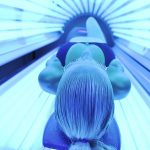
A face-lift for Father’s Day, anyone? It could happen: A new report finds many more men are taking advantage of the same plastic surgeries that have long been associated with women. The midlife decision by men to try a face-lift or other procedure has been nicknamed the “Daddy-Do-Over” — referencing the “Mommy Makeover” for women. Whatever it’s called, “men are embracing the idea of surgery more than before,” said Dr. Alan Matarasso, president of the American Society of Plastic Surgeons (ASPS). He stressed that the average man approaching or in middle age might have different reasons for wanting a nip or a tuck, compared to his female peers. “Obviously, men don’t go through the same physical changes that women experience during pregnancy and post-pregnancy, but their lifestyle does change, which can impact their appearance,” Matarasso said in a society news release. “Diet and exercise patterns fluctuate, and they don’t sleep as much,” he added. “Men notice their body changes due to aging and parenting, and it starts to look completely different in their 30s and 40s. That is the point of a Daddy-Do-Over.” In fact, according to the ASPS, more than 1 million men had cosmetic surgery in 2018, a 29% increase since 2000. Like women, men are typically getting body contouring and facial procedures to enhance their physique and keep the dreaded “dad bod”… read on >



























-300x200.jpg)










